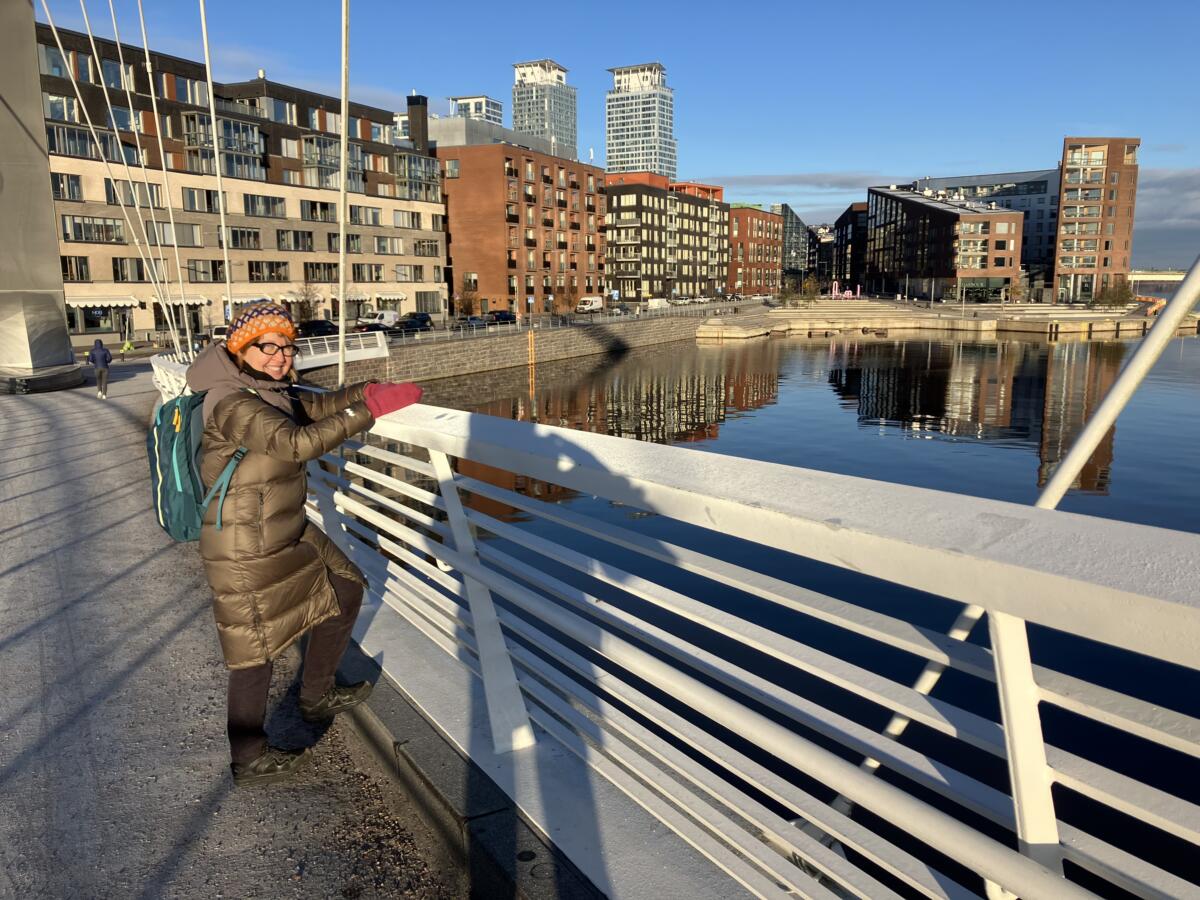Doctoral researcher Niran Baibulat: Walking produces a visual narrative
In her research, doctoral researcher Niran Baibulat from Uniarts Helsinki’s Academy of Fine Arts applies the Oulipo method of constraining techniques, making herself choose her walking routes on the basis of details such as the red cars she sees, for example. As part of this year’s Research Days at the Academy of Fine Arts, Baibulat will be organising an event called Follow Through Walking with her two colleagues.

Niran Baibulat graduated as a Master of Arts in 1993 from the University of Art and Design Helsinki and is now finishing her doctoral degree at the Academy of Fine Arts. Her interest in installation and concept art started early on. She used walking as the artistic research method already for her master’s thesis project. Her project, titled “Rajamaa”, dealt with fringe areas – the space between the built environment and nature.
The installations that she makes using the walking method consist of multiple parts, and the way Baibulat sees it, they are about flipping the experience. The method generates a visual narrative: in her works, she traces the walk with threads, photograph structures and text. Baibulat’s soon-to-be finished doctoral research also revolves around this walking theme.
“Walking is a method that we always have with us. It helps us go near and far. In some ways, it is similar with handiwork; the observations are within arm’s reach and the act has a strong bodily aspect. I think that walking entails adopting a certain attitude. It can take you to your physical limits.”
Extreme limits and constraints, coupled with playfulness, too, have an essential role in Baibulat’s research. In it, she has applied the Oulipo method that was originally developed in the 1960s for literature, where art composition is constrained by applying certain rules. The most well-known figures in the movement are perhaps Italo Calvino and Georges Perec.
Oulipo writers searched for new forms and structures and played with language. This is what Baibulat has applied to her visual art.
In her urban walking method, Baibulat paces her walk with the help of red cars, for example: crossing the street is allowed only when encountering a red car. According to Baibulat, the constraint does not introduce limitations but new possibilities.
“What’s essential in the urban walking method is that I’m not bound by city planning and instead, I can personally observe and shape the city. I’m not passive but active, a dynamic participant in the urban space. I take the rules and apply them for my own use.”
To gain a better understanding of the method’s possibilities, we decided to conduct this interview by walking on Mustikkamaa Island in Helsinki, and every now and again, we stopped to look at the scenery.
“Look at the views that open up from here. These kinds of places where you can see lots of sky should be protected.”
Stopping on the Isoisänsilta Bridge rewarded us later on, as we noticed two seals offshore Kalasatama.

KuvA Research Days welcome a diverse bunch
The KuvA Research Days have been organised since 2015. The event is a meeting place for researchers, and its online lectures also attract international viewers. This year, the three-day event on 10–12 December will present ongoing research at the Academy of Fine Arts and delve into the special characteristics of artistic research.
The first day will be dedicated to research into art by Indigenous peoples, carried out by Professor Emerita of Artistic Research Lea Kantonen from the Academy of Fine Arts. The academy’s Kuva/Tila gallery is currently hosting an exhibition that is based on the research project.
Baibulat became familiar with Kantonen’s research work already during her student years and finds her working methods groundbreaking.
“The field of research in the arts is diverse, and it’s hard to put it into a box of definitions. Its multifaceted element makes it interesting. Artistic research has established its position, and I think that scientific research has benefitted from artistic research methods. The Research Days reflect on all of this and highlight a few broader themes each year. Research itself often takes place elsewhere, but the Research Days are a chance for anyone to come and listen to the presentations.”
On Tuesday, 11 December, Baibulat is organising an event called Follow Through Walking with her researcher colleagues Jaakko Ruuska and Lena Séraphin. The goal is to examine the characteristics of the walk as an event, as in what kind of information about the city can be exposed by walking and how walking as an activity can be related to artistic research.